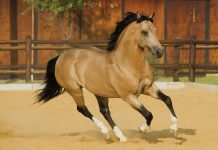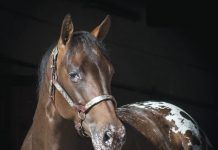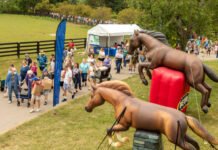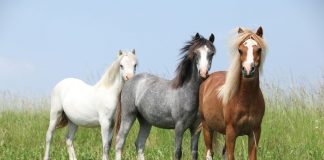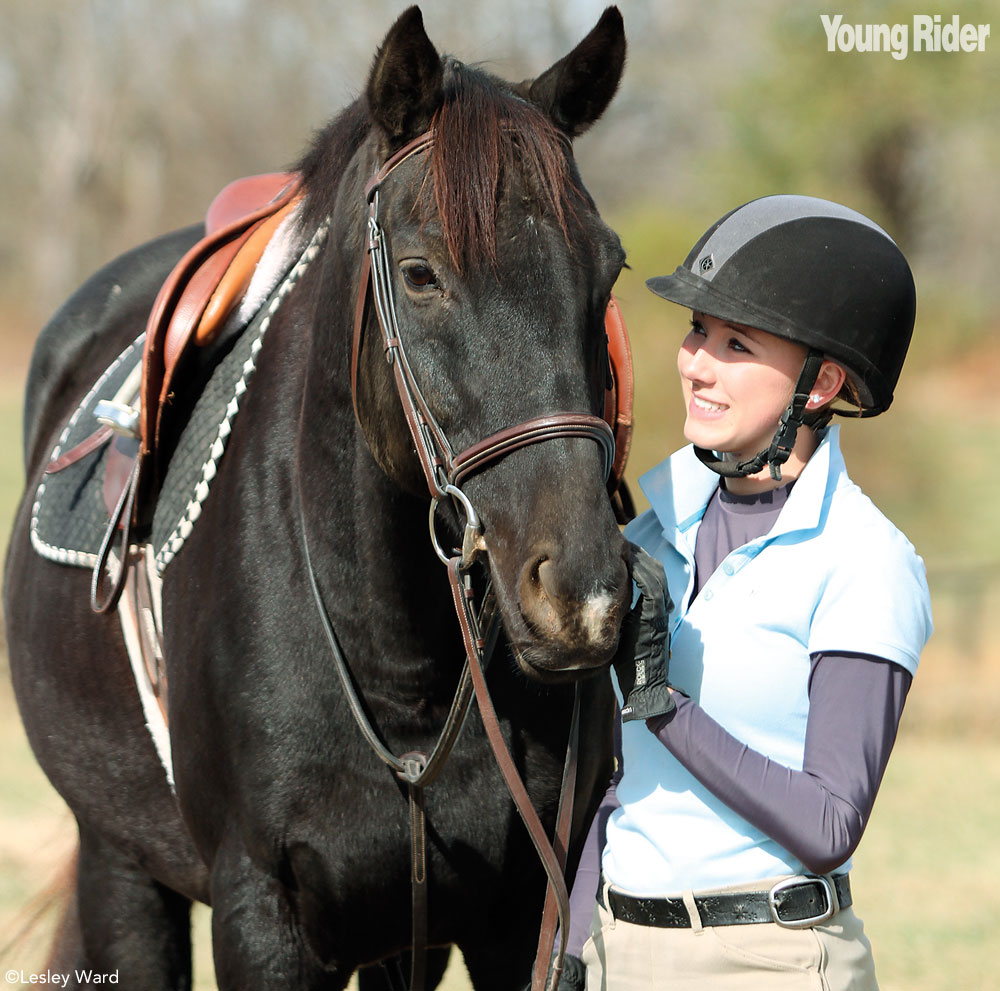
Congratulations! You’ve found the horse of your dreams, and purchased an off-the-track Thoroughbred (OTTB) of your very own. Now what? Now that you have the right partner, it’s time to begin the journey of training him for the discipline of your choice.
Here are a few of the major differences between racehorses and sport horses, and how you can help bridge the gap between the two worlds for your new partner.
1. The Stirrups & the Saddle
Think about how a jockey stands up in the stirrups while galloping a racehorse. His stirrups are very short and his racing saddle is small and lightweight, so it can be a big surprise to a former racehorse when his rider uses an English saddle for the first time! Suddenly the rider’s stirrups and legs wrap all the way around the horse’s barrel, and the saddle flaps reach down onto his sides—this can be a big shock to some young horses.
To help your OTTB get used to his new tack, start by longeing him in your saddle. The flap of an English saddle may bounce as a horse moves, and he needs to become comfortable with the new saddle before you hop on his back. Longe him slowly every day in tack until he acts like his new wardrobe is no big deal—then you can think about riding him.
To help prepare your OTTB to feel your leg on his side, stand on the ground beside him as he’s standing still and press your forearm to his side, just behind the girth. Your horse will probably try to walk forward. Instead, encourage him to halt quietly and keep repeating that gentle action until you can convince him to step sideways away from the pressure. Repeat on both sides.
This easy exercise helps your horse become comfortable with the idea of your leg on his side, and will help you introduce lateral work later on. This exercise may take a few days or a few weeks to learn, depending on the horse, so be patient.
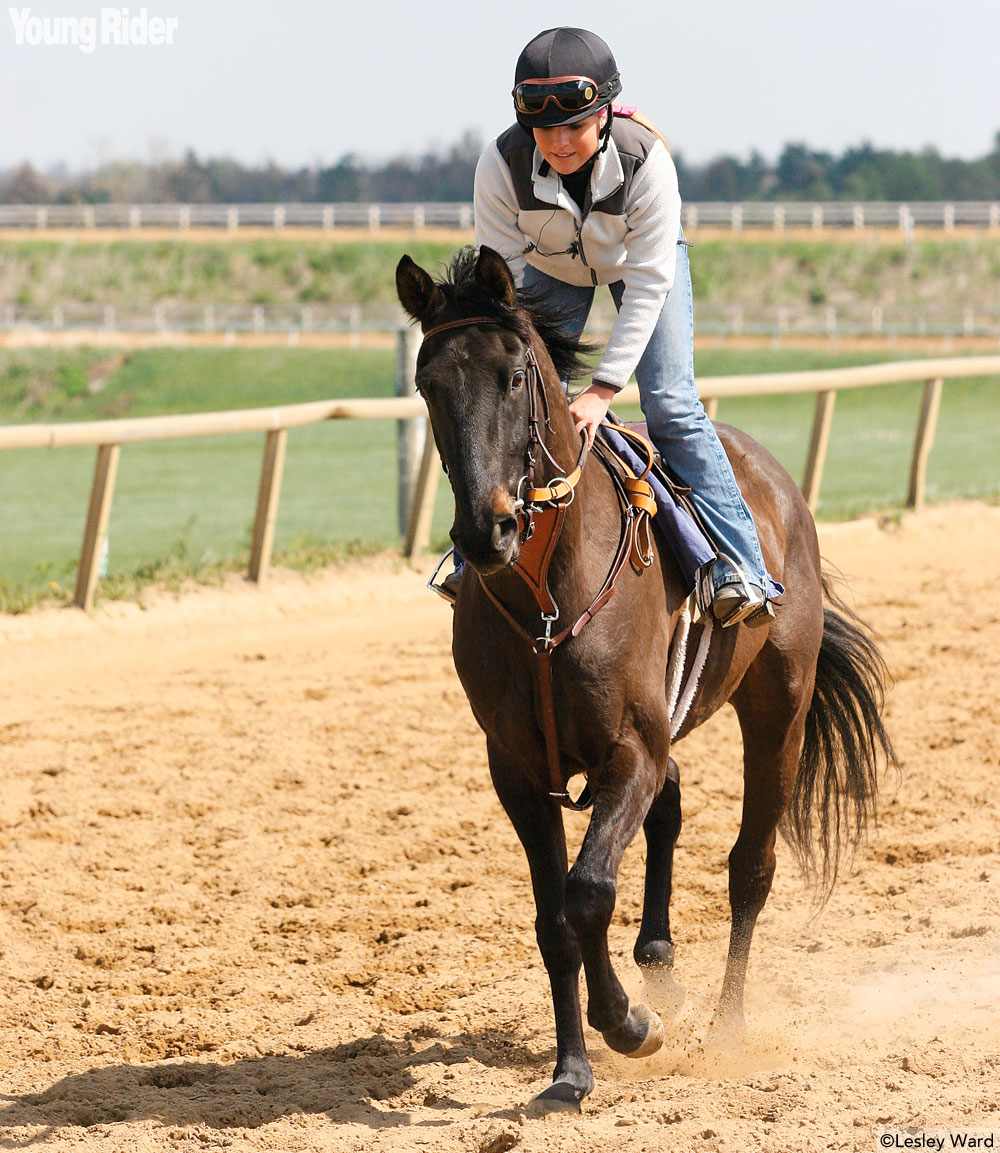
2. The Reins
As your horse becomes comfortable with Step 1, you can begin riding him. Now is the time for him to learn that the reins have a different meaning in this new sport.
As a racehorse, he was most likely encouraged to lean into the pressure of the reins as he galloped. This is why many new OTTB owners struggle with the fact that simply pulling on the reins doesn’t necessarily slow down their horse.
To teach your horse how to respond to rein pressure, start at the walk and practice steering small circles left and right. If you touch the bit and he gives or turns, loosen the contact and praise him. Be patient and teach your horse that a light touch of one rein guides him to turn onto the circle.
By using one rein at a time, you teach your horse to think about turning and listening, rather than locking on the reins and pulling.
Next, practice transitions. Stick to the walk at first, and ask your horse to halt by making your seat very still and stopping moving with your horse.
Support this cue with a gentle half halt and then ask him to halt. Repeat this exercise as needed until your horse walks when your seat is soft and your body follows the motion of his walk, but he stops when your seat becomes still.
Once you teach your horse to slow down off your seat, not your hands, you can progress to the trot and then eventually the canter. Your goal is to have a horse that responds to your turning aids and the way you’re sitting in the saddle, rather than locking on the bit and pulling.
3. The Buddy System
When you’ve mastered Steps 1 and 2, and when you can ride your ex-racehorse around the arena at a walk, trot, and canter confidently, it’s time to venture outside the arena!
But before you walk out the gate, remember how your horse was worked back in his track days. Many American Thoroughbreds walk from their stable to the track with the help of a “pony” horse, often a well-broken, older horse that can help guide them through stressful experiences like heading to the starting gate. Use this same tactic with your horse by using the buddy system. Ask a friend with a calm, well-behaved horse to escort you on your first adventures away from the safety of the arena.
Your first trail or field rides will be more successful if you head out after you’ve worked your horse in the arena and he’s warmed up and relaxed.
Keep your first outings short. Slowly introduce longer hacks with the help of the buddy system so that your OTTB feeds off the calm nature of the other horse.
Once you feel safe riding your OTTB at the walk in open spaces, begin trotting and cantering to build his confidence outside the arena.
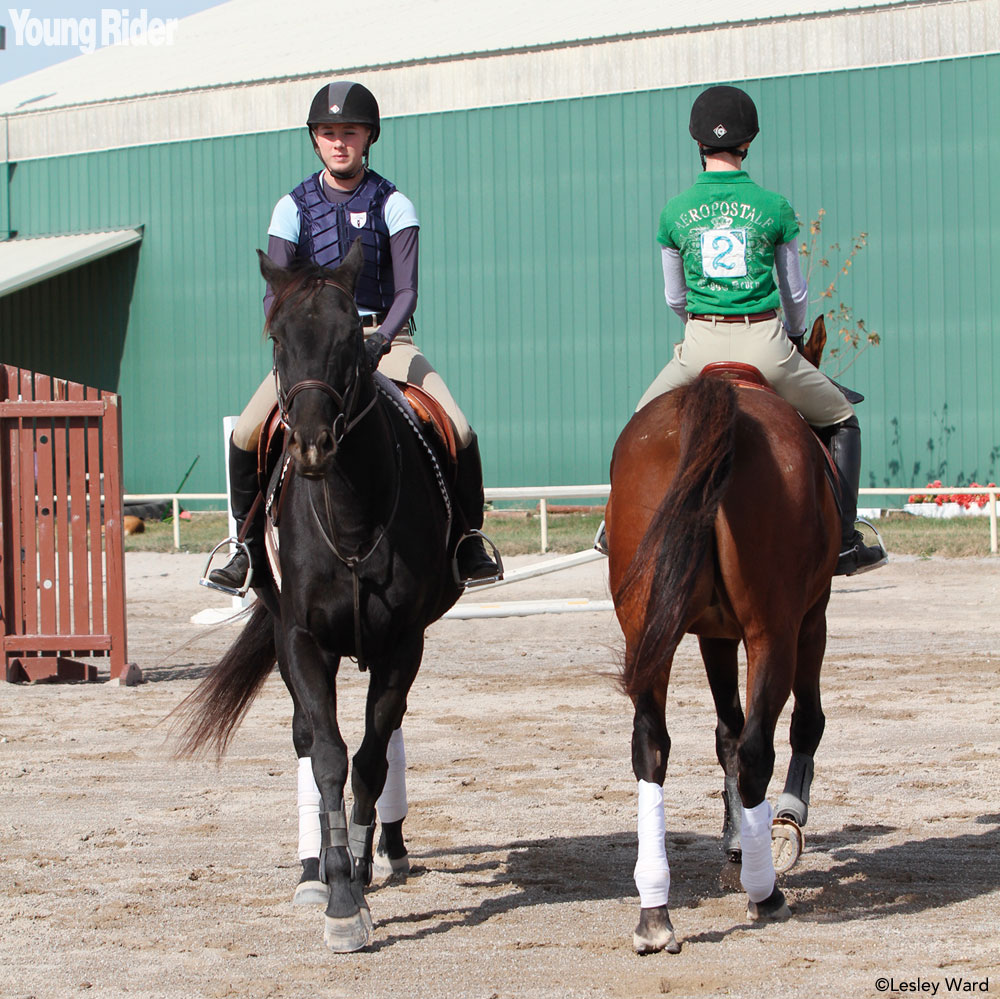
4. The Crowded Room
As training progresses, you may consider taking your OTTB to his first show. But before you send in your entry, remember that as a racehorse, your OTTB was accustomed to galloping the same direction as all the other horses on the track. As a result, the warm-up ring at a horse show can be an overwhelming place for an ex-racehorse.
Before you go to a show, ask a few friends to ride with you in the arena. If you keep your horse at home, sign up for a few group lessons with a trainer who has worked with OTTBs.
Ride confidently and help your OTTB get used to horses passing him from both directions.
Use lots of pats and praise to help him understand that his new job doesn’t mean he has to be in the front of the pack all the time.
Once he’s accustomed to horses working around him, your OTTB will be better prepared for his first experience in a warm-up ring, making his first horse show as stress-free as possible.
Remember that every horse works at his own pace, so each step may take days or months depending on the horse and his history.
The most important thing for you do is to make each ride all about developing your new horse’s confidence.
Thoroughbreds are known for their strong work ethic and their incredibly generous hearts; bonding with your horse and building up his confidence should earn you a friend for a lifetime. Enjoy the journey!
Megan Moore is the head trainer and co-owner of Team CEO Eventing in Georgetown, Ky. Megan has taken three Thoroughbreds off the track and competed them through the Advanced level of eventing. Megan is also a United States Eventing Association Certified Instructor.
This article originally appeared in the May/June 2014 issue of Young Rider magazine. Click here to subscribe!

